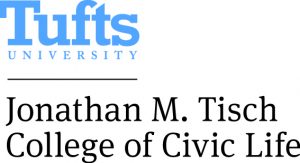Jürgen Habermas (1929-) is a German philosopher and sociologist, often seen as the leader of the intellectual movement called the “Frankfurt School” in its second generation, when he helped to shift it away from Marxism. He is often presented as a proponent and theorist of deliberative democracy, although he does not endorse all of the ideas and strategies advocated under that heading.
Contents
Video lecture
This is a 28-minute video lecture to introduce the main ideas of Jurgen Habermas.
Theory of communication
At the root of Habermas’ philosophy is a distinction between: (1) strategic or instrumental action and (2) communicative action. When taking instrumental action, you try to get someone else to do what you want; you make that person your instrument. For instance, you threaten or pay him or use selective arguments and evidence to convince him to believe that what you want is in his interests. In communicative action, on the other hand, you try to persuade someone else to agree freely with you on the merits of what you say. You and the other person genuinely ask, “What should we do?“
Communicative action typically has three goals: “truth, normative rightness, [and] authenticity” (Habermas 1987, 398). For example, I might stand up in a community meeting to say, “We should increase the school tax by 10 percent so that we can afford a reading specialist.” Here I am making three types of claim at once:
- Truth claims: a 10 percent increase is both necessary and sufficient for hiring a reading specialist and that we have the legal authority to raise taxes.
- Value claims: it would be good for our community to employ a reading specialist and that the expense is worth the extra taxation.
- Authenticity claims: I really value and seek this change in policy.
Each of these aspects of my claim is then subject to critical review. Maybe a 10 percent tax would not be sufficient or is not necessary because we can already afford a reading specialist. Maybe lower taxes would be more valuable for the community than an extra employee. And maybe I do not really want what I say that I want. Perhaps I am just trying to make myself popular or create a diversion from a different issue. [Example drawn from Levine 2022].
Trying to reach uncoerced agreement turns discourse into the joint pursuit of truth, agreement about values, and authenticity rather than an expression of mere opinion or interest. A valid communication, then, is one that would persuade in the absence of coercion and other flaws (such as lack of time and attention). It would persuade other people in what Habermas envisions as an “ideal speech situation” in which “no force except that of the better argument is exercised” (Habermas 1973/1975, 110, 108). The benefits of such conversations include better public understanding of what is right and good and also richer and more defensible inner thoughts (Habermas 1987, 2).
Social theory
The following concepts from Habermas’ social theory are important to his overall view:
- Lifeworld: This is the accumulated body of ordinary experiences and assumptions that any human being has. We share large amounts of our personal Lifeworlds with the people we know best. When we communicate with people whose Lifeworld overlap with our own, our communication is intimate and often not easy for outsiders to understand. For example, members of a family may refer to common memories that make no sense to other people. A person’s Lifeworld is a basis of meaning and value, but it is also biased and narrow.
- System: A system uses instrumental reasoning to get some predetermined outcome efficiently and at a large scale. A market system produces goods for profit. A governmental system produces order. Systems reflect specialization and complexity. They may be necessary, but they tend to distort free communication about values.
- The Public Sphere: The Public Sphere is a set of venues where people come out of their private Lifeworlds to exchange free arguments about what is right to do. These discussion yield informed and thoughtful public opinion, which ought to influence government in a deliberative democracy. The Public Sphere promises to be an ideal speech situation (see above), although it never lives up to that ideal. The Public Sphere is composed of actual institutions that have resources, rules, and incentives. Examples include the World Wide Web, a newspaper, or a coffee shop where political conversations are frequent and appreciated. The design of these institutions influences the degree to which they approximate the ideal speech situation.
Social criticism and reform
Habermas is concerned about harmful forms of power. For instance, he observes that Systems (such as market economies and bureaucratic welfare states) “colonize” or distort the Lifeworld. A classic example is a television set that becomes part of a household’s daily life but exists to advertise consumer goods. TV programming may make the household’s Lifeworld inauthentic and distort the people’s values. Another example is the way that institutions that claim to be part of the Public Sphere actually serve other goals. For example, if a billionaire owns and influences a newspaper or television news station, it is not really the impartial source of information that it claims to be.
Habermas would thus support various legal and institutional reforms (depending on the situation). Although he is often mistakenly presented as a proponent of dispassionate, “rational” discussion, he explicitly favors social movements that are adversarial and disruptive (e.g., Habermas 1985, 98.) He argues that social movements can force Systems to address issues that they are unwilling to discuss.

